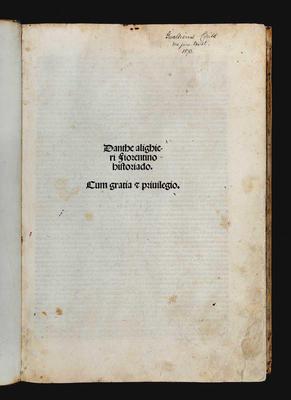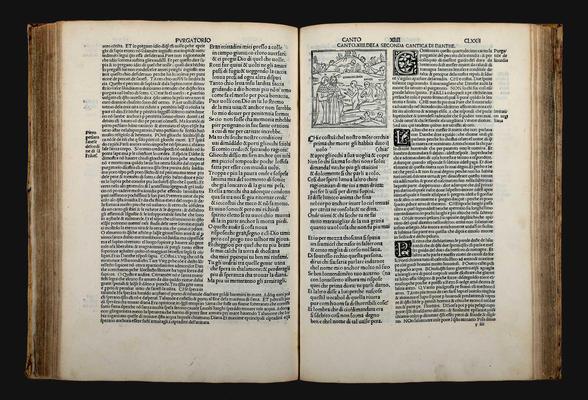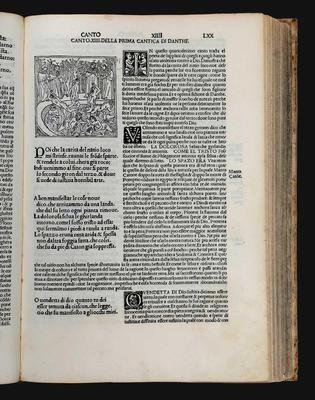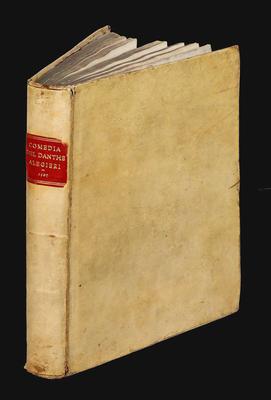Dante Alighieri
Dante Alighieri Fiorentino historiado. Cum gratia et priuilegio.
Venezia, Bartolomeo Zani, 17 June 1507.Folio (308 x 206 mm). Collation: aa10, a-z8, &8, cum8, rum8, A-H8, I10, K-L8. [10], 298 leaves. On fol. L8r woodcut printer's device. Large woodcut on fol. a1v, depicting Dante, Virgilius and the three wild beasts; ninety-nine woodcut vignettes in text; numerous woodcut decorated and animated initials, on black ground. Eighteenth-century vellum over pasteboards. Smooth spine, title in gold on later red morocco lettering-piece. Edges speckled blue. A good copy, the outer blank corners of fols. aa1-d8, restored; minor repairs to the outer blank margins of fols. L3-L7, backed the last leaf. Title-page browned, the outer blank margin of the first two leaves slightly damaged, a few finger-marks. A few contemporary marginalia, in brown ink.
Provenance: the famous historian and collector of Norfolk manuscripts Anthony Norris of Barton Turf (1711-1786; ownership inscription on the recto of the front flyleaf, ‘Antonius Norris de Barton in Com Norfol. Arm 1780'); the banker and antiquary Dawson Turner (1775-1858); to Henry Phillips Esq. (on the recto of the front flyleaf the lenghty note, ‘To Henry Philip Esq. from his friend, Dawson Turner, formerly the property of Anthony Norris of Barton Esq. with his autograph', followed by biographical information on Norris); Gualtierus Child (ownership inscription on the title-page, ‘Gualtierus Child me jure tenet. 1873'); Paolo Cagna Ninchi (ex-libris on the front pastedown); Livio Ambrogio collection.
The rare edition of Dante's poem published by the Venetian printer Bartolomeo de Zanne, which follows in the format and layout the fifteenth-century tradition. Textually, the edition is a resetting of Pietro Quarenghi's 1497 Commedia, surrounded by the extensive commentary of Cristoforo Landino, which first appeared in 1481. The woodcuts are copied, with a few adaptations, after the cycle designed for the Venetian Commedia printed in 1491 by Bernardinus Benalius and Matteo Capcasa, the first edition to contain a complete figurative commentary to each of the cantos in the poem.





